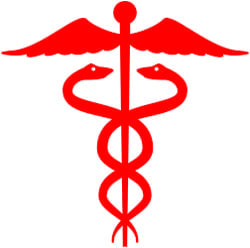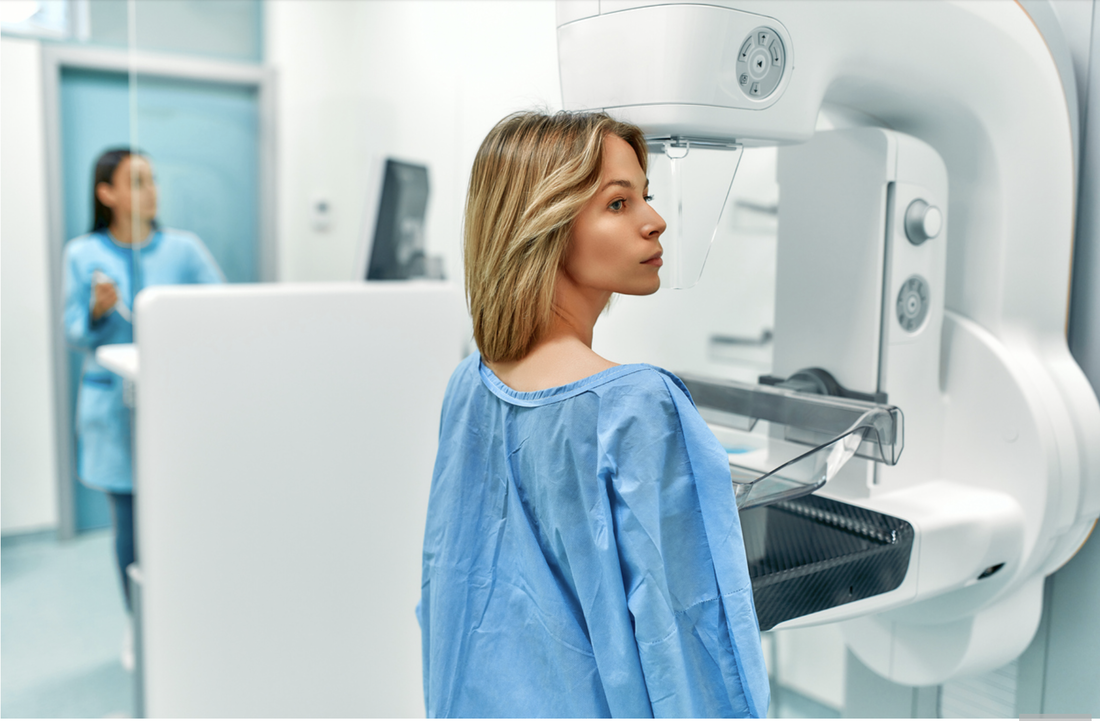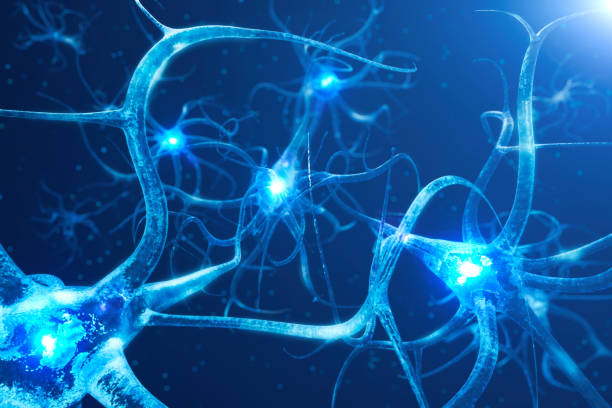A Rise In Breast Cancer Rate For Younger Women
This report came out in May 2024.
Women across the world are increasing becoming diagnosed with breast cancer under age 40. Researchers from the Washington University School of Medicine in St. Louis found a 20% increase in breast cancer among women born in 1990 compared to those born in 1955. Moreover, the types of breast cancer found in women under under "tend to have later stage tumors, when the disease is more advanced and more difficult to treat, " according to Adetunji T. Toriola, MD, PhD, MPH, co-leader of the Cancer Prevention and Control Program at Siteman Cancer Center in St. Louis, MO.
To make the matter worse, is that most women do not begin regular cancer screening until at least age 40. In fact the U.S. Preventative Service Task Force released new guidelines this month to begin mammograms every other year at age 40, rather than the previous annual exam at age 50.
Women across the world are increasing becoming diagnosed with breast cancer under age 40. Researchers from the Washington University School of Medicine in St. Louis found a 20% increase in breast cancer among women born in 1990 compared to those born in 1955. Moreover, the types of breast cancer found in women under under "tend to have later stage tumors, when the disease is more advanced and more difficult to treat, " according to Adetunji T. Toriola, MD, PhD, MPH, co-leader of the Cancer Prevention and Control Program at Siteman Cancer Center in St. Louis, MO.
To make the matter worse, is that most women do not begin regular cancer screening until at least age 40. In fact the U.S. Preventative Service Task Force released new guidelines this month to begin mammograms every other year at age 40, rather than the previous annual exam at age 50.
The Role of Hormone Receptors in Breast Cancer
Such a large shift in the recommended screening age raises the question: What is causing breast cancer in younger women?
There are many factors at play, some of these include:
* Exposure to toxins
* Screening
* Lack of education in performing self -exams
* Genetics
* Race
Toxin Exposure
There over 2,400 chemical banned within European cosmetic companies; there are 11 banned in the United States.
Because the FDA does not have the authority to require cosmetic companies to submit their safety data, tracking the ingredients lists and safety risks is difficult. More than 80,000 chemicals have been introduced into the marketplace in the past 50 years, many of which are known carcinogens. Many of these chemicals are in items targeted for women. Repeat exposure to these known toxins can increase the risk of breast cancer.
Screening Exams
The lack of screening exams for women under 40 are one of the biggest risk factors for the advancement of breast cancer at a later stage. Insurance policies have made it difficult to access ultrasounds and mammograms for screening purposes for younger women. While these imaging tools should not be the first choice for screening, it should not be difficult to access when a woman suspects a problem.
Genetics
Genetics play a role in the development of breast cancer in young women. There are genes called BRCA1 and BRCA2 that can be hereditary among man and women. These genes may account for a 45-85% chance of developing breast cancer in your lifetime, along with a 10-46% chance of developing ovarian cancer. Certain cancers within the family can also be related to breast or ovarian cancer , such as:
* Prostate
*Salivary gland cancer
* Colon
* Pancreatic
* Esophageal
* Lung cancer
* Stomach
* Uterine
* Thyroid
* Melanoma
The closer the relationship to a family member-such as your mother or sister-- with these types of cancer, the higher the risk of developing breast cancer.
Race
Race, unfortunately, places women at a higher risk for breast cancer at younger ages. A 2024 study found that Black women, especially among those ages, 20 to 29 have a 53% increased risk compared to white women of the same age group. A 2020 study found that Black women are more likely to die from breast cancer than any other ethnic group as well.
Increased risks for the development of breast cancer are hereditary among eastern European Jews. The CDC has found about 1 in 4 Ashkenazi women carry the BRCA gene, making them more susceptible to developing breast cancer under the age of 50.
Increased Cases of Hormone-Positive Cancers
There has been an increase in hormone- positive and HER2-positive cancers in the United States. On cancer cells, there may or may not be the presence of hormone receptors. The hormone receptors are referred to as ER ( estrogen receptor) and PR (progesterone receptor) and will either be negative or positive when tested.
The hormone receptors feed off estrogen and progesterone, resulting in cancer cell growth. the hormones do not cause cancer, but they provide nourishment to cancer cells and support growth. Younger women have higher levels of these hormones to aid in fertility.
Breast cancer is an extremely treatable form of cancer. When detected early, the chances of remission increase and the complications from the cancer decrease.
Credit: WebMD
Such a large shift in the recommended screening age raises the question: What is causing breast cancer in younger women?
There are many factors at play, some of these include:
* Exposure to toxins
* Screening
* Lack of education in performing self -exams
* Genetics
* Race
Toxin Exposure
There over 2,400 chemical banned within European cosmetic companies; there are 11 banned in the United States.
Because the FDA does not have the authority to require cosmetic companies to submit their safety data, tracking the ingredients lists and safety risks is difficult. More than 80,000 chemicals have been introduced into the marketplace in the past 50 years, many of which are known carcinogens. Many of these chemicals are in items targeted for women. Repeat exposure to these known toxins can increase the risk of breast cancer.
Screening Exams
The lack of screening exams for women under 40 are one of the biggest risk factors for the advancement of breast cancer at a later stage. Insurance policies have made it difficult to access ultrasounds and mammograms for screening purposes for younger women. While these imaging tools should not be the first choice for screening, it should not be difficult to access when a woman suspects a problem.
Genetics
Genetics play a role in the development of breast cancer in young women. There are genes called BRCA1 and BRCA2 that can be hereditary among man and women. These genes may account for a 45-85% chance of developing breast cancer in your lifetime, along with a 10-46% chance of developing ovarian cancer. Certain cancers within the family can also be related to breast or ovarian cancer , such as:
* Prostate
*Salivary gland cancer
* Colon
* Pancreatic
* Esophageal
* Lung cancer
* Stomach
* Uterine
* Thyroid
* Melanoma
The closer the relationship to a family member-such as your mother or sister-- with these types of cancer, the higher the risk of developing breast cancer.
Race
Race, unfortunately, places women at a higher risk for breast cancer at younger ages. A 2024 study found that Black women, especially among those ages, 20 to 29 have a 53% increased risk compared to white women of the same age group. A 2020 study found that Black women are more likely to die from breast cancer than any other ethnic group as well.
Increased risks for the development of breast cancer are hereditary among eastern European Jews. The CDC has found about 1 in 4 Ashkenazi women carry the BRCA gene, making them more susceptible to developing breast cancer under the age of 50.
Increased Cases of Hormone-Positive Cancers
There has been an increase in hormone- positive and HER2-positive cancers in the United States. On cancer cells, there may or may not be the presence of hormone receptors. The hormone receptors are referred to as ER ( estrogen receptor) and PR (progesterone receptor) and will either be negative or positive when tested.
The hormone receptors feed off estrogen and progesterone, resulting in cancer cell growth. the hormones do not cause cancer, but they provide nourishment to cancer cells and support growth. Younger women have higher levels of these hormones to aid in fertility.
Breast cancer is an extremely treatable form of cancer. When detected early, the chances of remission increase and the complications from the cancer decrease.
Credit: WebMD


